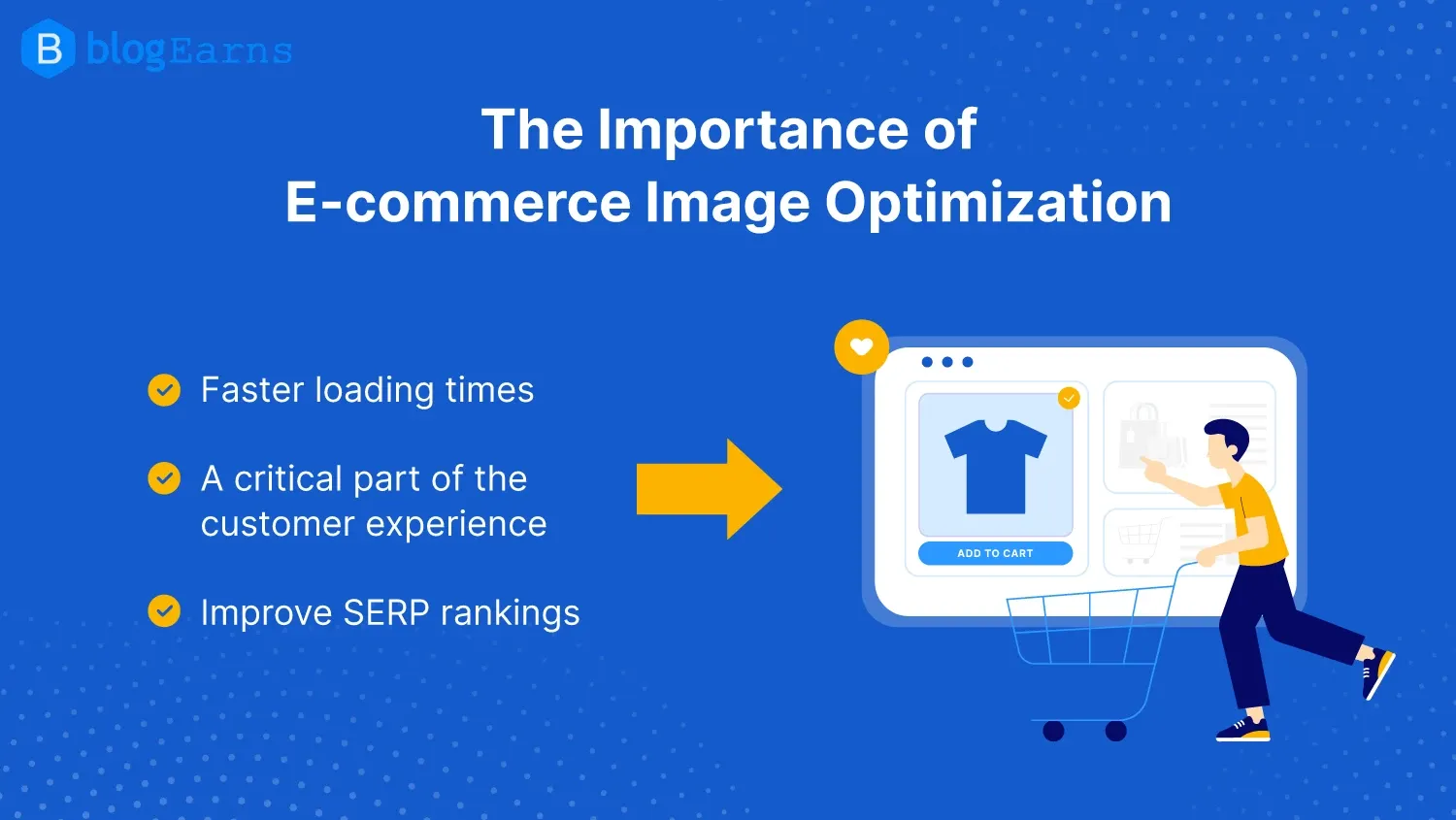Rank Higher: Ecommerce Image Optimization

In the competitive world of e-commerce, first impressions matter more than ever. With users increasingly relying on visual content to make purchasing decisions, image optimization has become a critical component of any successful e-commerce strategy. This article explores the importance of image optimization for e-commerce businesses, discussing its impact on website performance, user experience, and search engine rankings. We'll also provide actionable tips for optimizing your e-commerce images to maximize their effectiveness.
The Significance of Image Optimization in E-commerce
- Enhanced User Experience: High-quality, optimized images can significantly improve the overall user experience on an e-commerce website. Clear, visually appealing product images help customers make informed purchasing decisions and reduce bounce rates.
- Faster Page Load Times: Large, unoptimized images can slow down website loading times, leading to higher bounce rates and lower conversion rates. Optimizing images reduces file sizes, resulting in faster page load times and a more seamless browsing experience.
- Improved SEO Performance: Image optimization plays a crucial role in improving a website's search engine rankings. Optimized images with descriptive filenames, alt text, and relevant keywords can help improve visibility in image search results and overall SEO performance.
Key Elements of Image Optimization
- File Compression: Use image compression techniques to reduce file sizes without compromising image quality. Tools like Adobe Photoshop, TinyPNG, or JPEG Optimizer can help compress images effectively.
- Optimal Image Formats: Choose the right image format based on the type of image. For photographs, use JPEG format, while PNG format is ideal for images with transparent backgrounds or logos.
- Descriptive Filenames: Rename image files using descriptive, keyword-rich filenames that accurately describe the image content. Avoid generic filenames like "image001.jpg" and instead use descriptive filenames like "red-dress-women.jpg."
- Alt Text Optimization: Write descriptive alt text for each image that accurately describes the image content and includes relevant keywords. Alt text not only improves accessibility but also helps search engines understand the context of the image.
- Responsive Image Optimization: Optimize images for different devices and screen sizes to ensure a consistent and optimized user experience across all devices.
Actionable Tips for Image Optimization
- Use High-Quality Images: Start with high-quality images that are clear, well-lit, and properly composed. High-resolution images provide better clarity and detail, enhancing the overall user experience.
- Optimize Thumbnail Images: Pay special attention to thumbnail images, as these are often the first images users see. Ensure that thumbnail images are clear, visually appealing, and accurately represent the product.
- Utilize Image Sitemaps: Create an image sitemap and submit it to search engines to ensure that all of your optimized images are properly indexed.
- Monitor Image Performance: Regularly monitor the performance of your optimized images using tools like Google PageSpeed Insights or GTmetrix. Identify any images that are slowing down your website and take steps to optimize them further.
Conclusion
Image optimization is a critical aspect of ecommerce on-page SEO Optimization, impacting user experience, website performance, and search engine rankings. By implementing effective image optimization strategies, e-commerce businesses can enhance user engagement, improve website performance, and boost search engine visibility. From compressing image files to optimizing alt text and filenames, every aspect of image optimization plays a crucial role in creating a seamless and visually appealing online shopping experience. Take the time to optimize your e-commerce images, and you'll reap the rewards with improved user satisfaction, higher conversion rates, and better search engine rankings.
